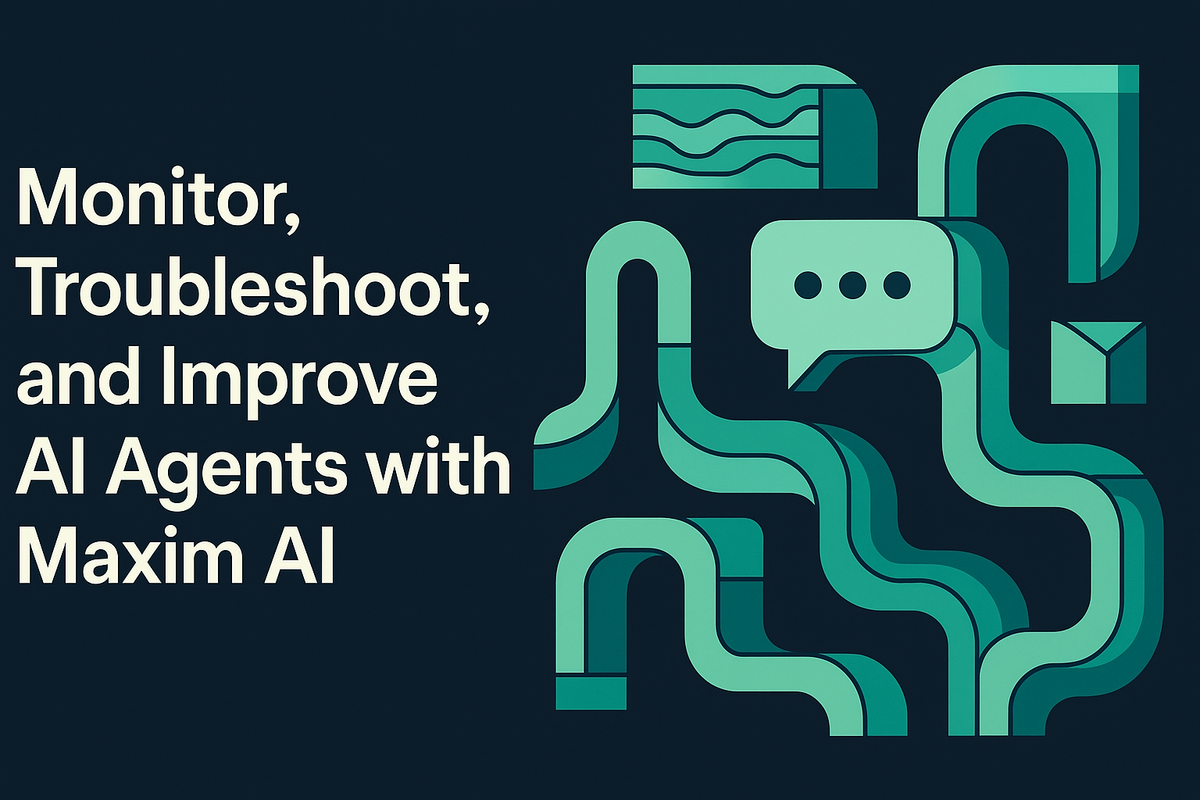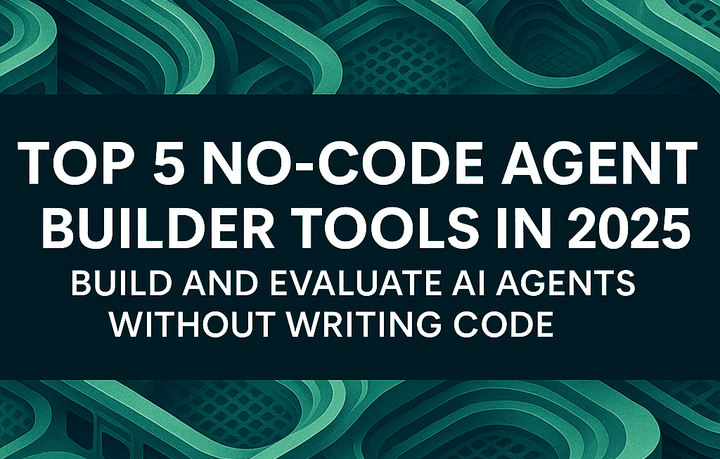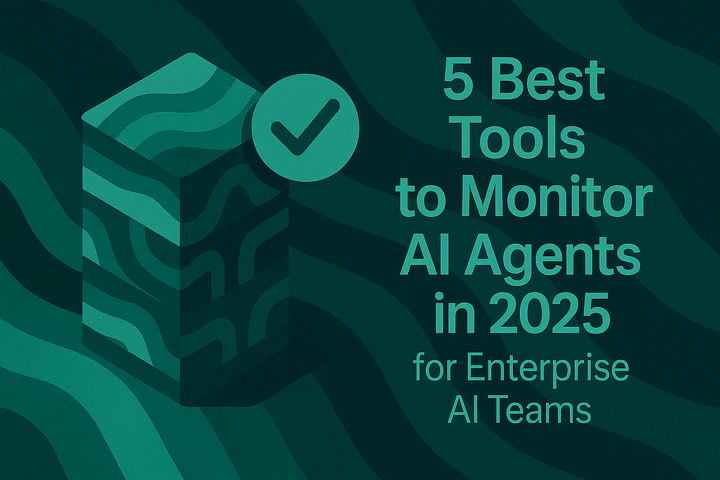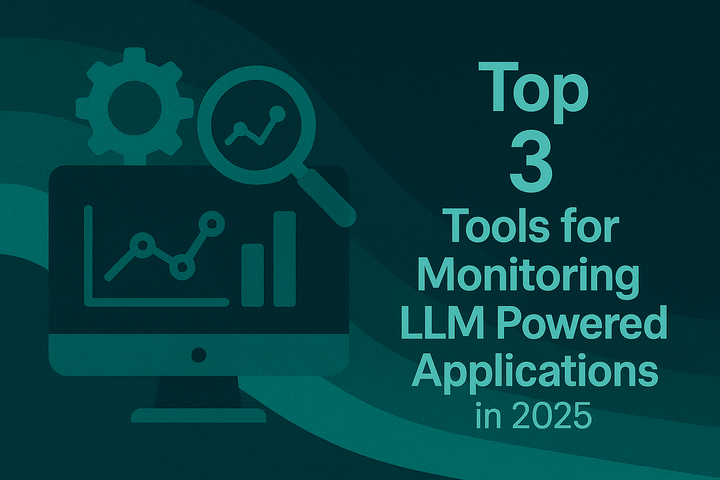Monitor, Troubleshoot, and Improve AI Agents with Maxim AI

AI agents are fundamentally different from traditional software systems. They make decisions autonomously, interact with external tools, process unstructured data, and generate outputs that vary even with identical inputs. This non-deterministic behavior creates unique monitoring and debugging challenges for engineering teams deploying production AI systems.
Traditional application monitoring approaches, tracking response times, error rates, and system resources, prove insufficient for AI agents. Teams need visibility into model behavior, output quality, reasoning chains, and the complex interactions between agents, tools, and data sources. Without comprehensive agent observability, production issues manifest as degraded user experiences before engineering teams can identify and resolve root causes.
This guide explains why AI agent monitoring requires specialized approaches, outlines proven strategies for troubleshooting production issues, and demonstrates how continuous evaluation drives systematic quality improvements. We'll show how Maxim AI's platform provides end-to-end capabilities for monitoring, debugging, and improving AI agents throughout their lifecycle.
Why Traditional Monitoring Falls Short for AI Agents
AI agents exhibit behaviors that traditional observability tools cannot adequately capture or explain. Standard metrics like latency, throughput, and error rates provide operational health signals but reveal nothing about output quality, reasoning correctness, or task completion.
Non-Deterministic Outputs
AI agents generate different responses to identical inputs based on sampling parameters, model versions, and context. This variability makes traditional regression testing ineffective. A response that passes syntactic validation may still contain factual errors, inappropriate tone, or logical inconsistencies that degrade user trust.
Multi-Step Reasoning Chains
Modern AI agents decompose complex tasks into sequential steps, invoking multiple models, tools, and data sources. When output quality degrades, engineering teams must trace through entire reasoning chains to identify whether failures stem from retrieval quality, model behavior, tool execution, or prompt engineering issues.
Context-Dependent Behavior
Agent performance varies significantly across user personas, conversation trajectories, and edge cases. Aggregate metrics obscure these patterns, preventing teams from understanding which scenarios drive quality issues. Effective agent monitoring requires granular visibility into behavior across diverse contexts.
Subjective Quality Metrics
Unlike traditional software where correctness is often binary, AI agent quality involves subjective dimensions like context relevance, coherence, safety, and alignment with user intent. Automated metrics provide signals, but comprehensive quality assessment requires combining programmatic checks, statistical measures, and human evaluation.
Research on large language model evaluation demonstrates that automated metrics often misalign with human judgment, particularly for nuanced tasks requiring domain expertise. Production monitoring must integrate multiple evaluation approaches to maintain quality standards.
Essential Components of AI Agent Observability
Comprehensive AI observability for production agents requires instrumentation across multiple dimensions.
Distributed Tracing for Multi-Agent Systems
Agent tracing captures detailed execution paths through complex workflows. Each agent invocation, tool call, retrieval operation, and model inference becomes a traced span with structured metadata including inputs, outputs, timestamps, and custom attributes.
Distributed tracing enables teams to:
- Visualize complete conversation trajectories across agent components
- Measure latency contributions from each step in multi-stage pipelines
- Identify bottlenecks in retrieval, reasoning, or generation phases
- Correlate quality issues with specific execution patterns
Modern AI applications often combine multiple specialized agents, each handling different aspects of user requests. Without comprehensive LLM tracing, debugging becomes impractical as teams lack visibility into how components interact and where failures originate.
Session and Conversation-Level Logging
Production AI monitoring must capture complete user sessions, not just individual API calls. Session-level logging preserves conversation history, user context, and cross-turn dependencies that influence agent behavior.
This granularity supports:
- Reproducing specific user issues by replaying exact conversation contexts
- Analyzing how agents handle multi-turn interactions and context accumulation
- Identifying systematic failures in particular conversation patterns
- Measuring task completion rates across user journeys
Maxim's observability platform provides hierarchical logging at session, trace, and span levels, enabling teams to analyze agent behavior at whatever granularity their debugging requires.
Quality Metrics and Automated Evaluations
Operational metrics alone cannot capture AI agent quality. Production monitoring must continuously measure output characteristics including factual accuracy, response relevance, safety compliance, and task completion.
Automated evaluations run continuously on production traffic, applying:
Deterministic rules for structural validation such as format compliance, required field presence, and output length constraints. These rules provide immediate quality signals with zero latency overhead.
Statistical metrics track trends in quantitative measures like response length distribution, perplexity, and sentiment scores. Statistical monitoring identifies gradual quality drift before user impact becomes severe.
LLM-as-a-judge evaluators assess subjective quality dimensions at scale. While research shows LLM evaluators have limitations for specialized domains, they effectively automate many quality checks that would otherwise require extensive human review.
Human evaluation provides ground truth for critical quality dimensions. Production systems should systematically sample outputs for expert review, using human feedback to validate and refine automated evaluators.
Custom Dashboards and Alerting
Engineering and product teams need flexible visualization tools that surface agent behavior patterns across custom dimensions. Custom dashboards enable teams to slice metrics by user persona, conversation type, model version, or business context.
Effective alerting routes quality issues to appropriate teams based on severity and impact. Alerts trigger on threshold violations for metrics like hallucination rates, task failure rates, safety violations, or user satisfaction scores, enabling rapid response to production degradation.
Troubleshooting AI Agents in Production
When production issues arise, systematic debugging approaches dramatically reduce time to resolution.
Identifying Root Causes with Distributed Tracing
Agent debugging begins with isolating where in the execution chain quality degrades. Distributed traces reveal:
Retrieval failures: Poor document relevance, missing context, or irrelevant sources that lead to ungrounded responses. RAG tracing captures which documents were retrieved, their relevance scores, and how the agent incorporated retrieved information.
Model behavior issues: Unexpected outputs from specific models, versions, or parameter configurations. Tracing shows exact model inputs, allowing teams to reproduce issues and test fixes in controlled environments.
Tool execution problems: Failed API calls, timeout errors, or incorrect tool parameter construction. Span-level logging captures tool invocation details, making external integration issues immediately visible.
Prompt engineering defects: Ambiguous instructions, insufficient context, or conflicting constraints in prompts. By examining prompt content alongside outputs, teams identify where prompt refinement would improve quality.
Reproducing Issues with Historical Context
Production issues often emerge from specific conversation contexts that are difficult to anticipate during development. Comprehensive session logging enables teams to reproduce exact user scenarios by replaying conversation history with identical inputs.
Maxim's observability platform preserves complete session context, allowing engineers to:
- Load production sessions into development environments
- Re-run agent logic with identical inputs and retrieve results
- Test fixes against real user scenarios before redeployment
- Build regression tests from production failures
This capability transforms one-off debugging into systematic quality improvement as production issues become permanent test cases.
Analyzing Failure Patterns Across User Cohorts
Individual failures provide limited insight into systematic quality issues. Pattern analysis across user cohorts reveals whether problems affect specific personas, conversation types, or usage contexts.
Effective debugging requires segmenting issues by:
User demographics and behavior patterns: Quality may vary across technical versus non-technical users, different geographic regions, or varying levels of domain expertise.
Conversation characteristics: Task complexity, conversation length, and topic diversity influence agent performance differently.
Temporal patterns: Quality degradation may correlate with specific times, days, or external events that change usage patterns.
Agent monitoring with flexible segmentation helps teams prioritize fixes based on user impact rather than anecdotal observation.
Diagnosing Multi-Agent Coordination Issues
Systems combining multiple specialized agents introduce coordination complexity. Debugging requires understanding how agents communicate, share context, and hand off responsibility.
Common coordination failures include:
- Context loss between agent handoffs
- Conflicting outputs from agents with different objectives
- Redundant work when agents lack awareness of each other's actions
- Task abandonment when no agent assumes responsibility
Distributed tracing for multi-agent systems captures inter-agent communication patterns, making coordination issues visible and debuggable.
Continuous Improvement Through Systematic Evaluation
Monitoring and troubleshooting address immediate production issues, but sustained quality improvement requires systematic evaluation and experimentation.
Pre-Release Testing with Agent Simulation
Agent simulation tests system behavior across hundreds of scenarios before production deployment. Simulation frameworks generate diverse user interactions spanning multiple personas, conversation styles, and edge cases.
Effective simulation includes:
Persona-based testing: Define user archetypes representing your actual user base. Generate conversations that reflect how different personas interact with your agent, including common questions, edge case requests, and adversarial inputs.
Trajectory analysis: Evaluate whether agents complete tasks successfully by analyzing conversation trajectories. Simulation identifies where agents get stuck, provide incorrect information, or fail to accomplish user goals.
Regression testing: Convert production issues into simulation scenarios, ensuring fixes don't regress and quality improvements persist across releases.
Maxim's simulation capabilities enable teams to re-run tests from any step, isolating exactly where behavior changes between versions.
Structured Experimentation with Prompt Versioning
Agent quality depends heavily on prompt engineering. Systematic experimentation requires prompt versioning, organized testing, and quantitative comparison across variants.
Maxim's Playground++ supports advanced prompt engineering workflows:
- Version control for prompts with full change history
- Side-by-side comparison across prompt variants and model configurations
- Automated evaluation across test suites to quantify improvements
- Deployment without code changes using experimentation variables
This infrastructure enables rapid iteration on prompt design while maintaining rigorous quality standards through systematic agent evaluation.
Building Robust Evaluation Suites
Comprehensive AI evaluation combines multiple evaluator types to capture different quality dimensions:
Off-the-shelf evaluators provide baseline quality measurement for common criteria like relevance, coherence, safety, and factuality. Maxim's evaluator store offers pre-built evaluators that teams can deploy immediately.
Custom evaluators assess domain-specific requirements unique to your application. Custom logic can validate business rules, check compliance requirements, or measure task-specific success criteria.
Human-in-the-loop evaluation collects expert judgment on outputs where automated assessment proves insufficient. Research demonstrates that human grounding remains essential for high-stakes applications in specialized domains.
Maxim's evaluation framework configures evaluators at session, trace, or span level with flexibility to measure quality wherever it matters most in your architecture.
Data Curation for Continuous Quality Improvement
Production logs contain valuable information for improving agent quality. Systematic data curation converts live traffic into test datasets that evolve with real-world usage.
Effective data management includes:
- Importing production sessions that represent diverse usage patterns
- Enriching datasets with human annotations and quality labels
- Creating targeted test splits for specific failure modes or edge cases
- Generating synthetic variations to expand coverage
Maxim's Data Engine supports multi-modal dataset curation, enabling teams to build comprehensive evaluation suites that reflect actual production complexity.
Operationalizing Monitoring and Improvement with Maxim AI
Maxim AI provides an integrated platform for the complete agent quality lifecycle, from pre-release testing through production monitoring and continuous improvement.
Real-Time Production Monitoring
Maxim's observability suite instruments production systems with distributed tracing, automated quality checks, and flexible dashboards. Teams gain visibility into agent behavior at session, trace, and span levels with detailed logging of inputs, outputs, and execution metadata.
Key capabilities include:
- Distributed LLM tracing across multi-agent workflows
- Automated evaluations running continuously on production traffic
- Custom dashboards slicing metrics by any dimension
- Real-time alerting with configurable thresholds and routing
This comprehensive agent observability transforms opaque AI systems into measurable, improvable platforms.
Simulation-Driven Quality Assurance
Agent simulation tests systems across diverse scenarios before production deployment. Teams simulate customer interactions across personas and edge cases, measuring quality with configurable evaluators and identifying failure points before users encounter them.
Simulation capabilities include:
- Scenario generation across user personas and conversation types
- Step-by-step execution with ability to re-run from any point
- Trajectory analysis measuring task completion and failure modes
- Integration with evaluation suite for comprehensive quality assessment
Rapid Experimentation and Iteration
Playground++ enables rapid prompt engineering cycles with systematic comparison across variants. Teams test different prompts, models, and parameters while tracking quality, cost, and latency metrics.
Features supporting experimentation include:
- Prompt versioning with full change history
- Multi-model comparison across providers and model families
- RAG pipeline integration for grounded response testing
- Quantitative evaluation across test suites
Unified Evaluation Framework
Maxim's evaluation platform supports deterministic rules, statistical metrics, LLM-as-a-judge evaluators, and human review, all configurable at whatever granularity your architecture requires.
Evaluation capabilities include:
- Evaluator store with pre-built quality checks
- Custom evaluator development for domain-specific requirements
- Human evaluation workflows for expert review
- Visualization across evaluation runs and prompt versions
Conclusion
AI agents require fundamentally different monitoring approaches than traditional software systems. Non-deterministic outputs, multi-step reasoning chains, context-dependent behavior, and subjective quality metrics demand comprehensive observability instrumentation.
Effective agent monitoring combines distributed tracing, session-level logging, automated quality evaluation, and flexible visualization. Systematic troubleshooting uses these capabilities to identify root causes quickly, reproduce issues reliably, and analyze failure patterns across user cohorts.
Continuous improvement requires agent simulation for pre-release testing, structured experimentation with prompt versioning, comprehensive evaluation suites combining automated and human assessment, and data curation workflows that evolve test coverage based on production patterns.
Maxim AI's platform integrates these capabilities into a unified workflow, from experimentation through simulation, evaluation, and production observability. Engineering and product teams gain the visibility, tools, and processes required to ship reliable AI agents and continuously improve quality based on real-world performance.
Ready to improve your AI agent quality and reliability? Book a demo to see how Maxim's platform accelerates monitoring, troubleshooting, and continuous improvement workflows, or sign up now to start building more reliable AI agents today.
References
- Wang, Y., et al. (2024). Benchmarking Generation and Evaluation Capabilities of Large Language Models for Instruction Controllable Summarization. arXiv preprint.
- Agarwal, S., et al. (2025). No Free Labels: Limitations of LLM-as-a-Judge Without Human Grounding. arXiv preprint.


